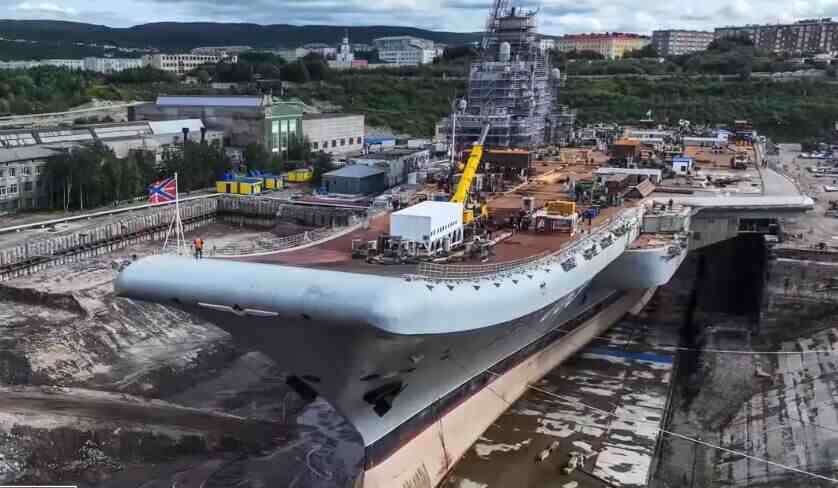In a strategic move to maintain and enhance its carrier capabilities, Russia has embarked on an extensive modernization plan for the Admiral Kuznetsov, its sole aircraft carrier. Despite facing setbacks and challenges in the past, the Russian navy is investing considerable resources in upgrading the carrier’s capabilities, signaling a commitment to preserving and advancing its carrier fleet.
Key Modernization Initiatives

Increased Aircraft Capacity:
One of the primary goals of the modernization effort is to enhance the carrier’s operational capabilities. The refit has successfully increased the aircraft capacity of the Admiral Kuznetsov from 24 to 26 fighter jets, along with accommodating as many as 12 helicopters.
Electronics and Propulsion System Upgrade:
To ensure the carrier remains technologically relevant, significant modifications are being made to upgrade its electronics and propulsion systems. These enhancements aim to improve the overall performance, efficiency, and reliability of the Admiral Kuznetsov.
Replacement of Aging Aircraft:
Recognizing the limitations of the aging Su-33, which primarily excels in aerial warfare with limited ground-attack options, Russia is actively working on replacing or modernizing its carrier-based aircraft. The MiG-29K, a naval version of the MiG-29, is expected to play a more prominent role in the carrier’s air wings.
Potential Removal of P-700 Missiles:
As part of the modernization plan, there is speculation that the carrier’s armament may see changes, including the possible removal of the P-700 missiles. This suggests a strategic shift in the carrier’s focus and capabilities.
Future Carrier Plans and Challenges
Debates on Building New Carriers:
While there is ongoing talk of building new carriers in Russia, there is a heated debate over the feasibility and necessity of such projects. The country has faced challenges, including a poor track record in carrier construction, evident from the Kuznetsov’s history and the difficulties in converting the Kiev-class Admiral Gorshkov for the Indian navy.
Strategic Importance of Carriers:
Despite the challenges, Russian officials emphasize the strategic importance of carriers, both in terms of naval capabilities and geopolitical influence. The modernization efforts are seen as a crucial step in maintaining skills, know-how, and infrastructure, laying the groundwork for potential future carrier projects.
Shift in Naval Focus:
While the Admiral Kuznetsov and other legacy platforms will continue to serve as symbols of Russia’s naval prowess, there is a noticeable shift in the navy’s focus towards smaller, missile-laden vessels and submarines. This transition reflects a broader strategy to adapt to evolving maritime challenges and technological advancements.
Conclusion
Russia’s commitment to modernizing the Admiral Kuznetsov underscores its determination to remain a significant player in naval warfare. The increased aircraft capacity, technological upgrades, and potential shifts in armament indicate a strategic realignment of the carrier’s capabilities.
Despite ongoing debates about the practicality of building new carriers, the modernization efforts serve as a testament to Russia’s enduring aspiration for a blue-water navy. As the Admiral Kuznetsov progresses through sea trials in 2022, it will not only demonstrate the navy’s technological advancements but also showcase Russia’s maritime ambitions on the global stage.




1 thought on “The Modernization of the Admiral Kuznetsov Russian Aircraft Carrier”
Comments are closed.